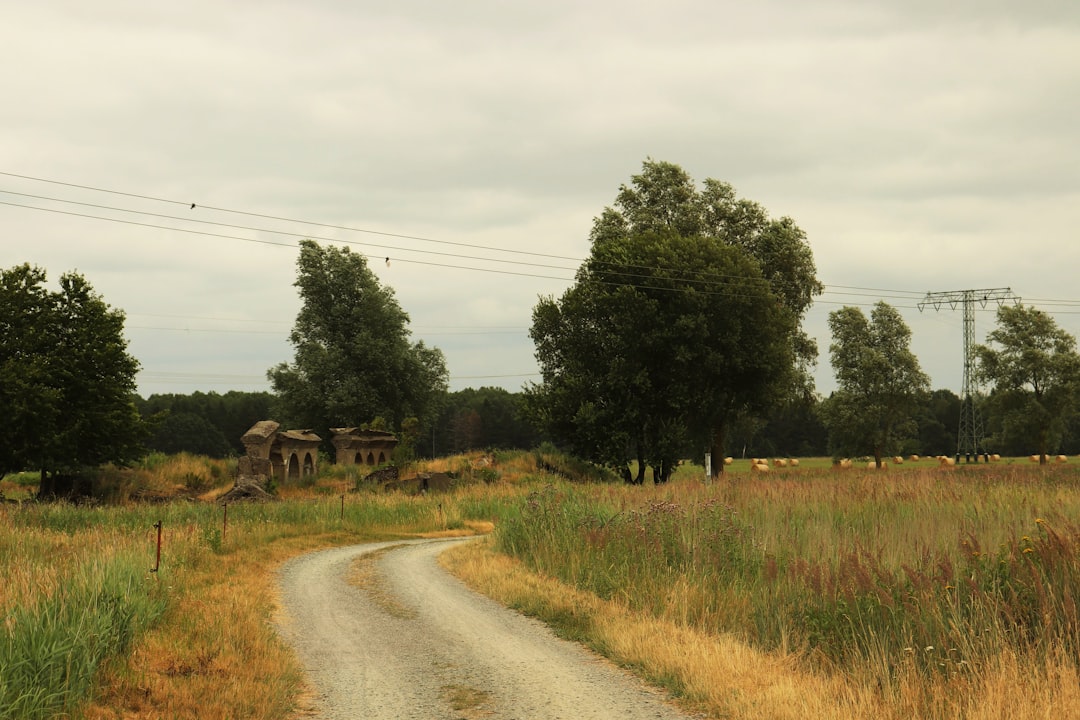Geography and Behavior How Home Counties Shape Traits
Geography and Behavior How Home Counties Shape Traits - The Unseen Hand of Commuter Belts Shaping Outlooks
While the economic function of commuter belts is widely acknowledged, less attention has been given to their profound, almost imperceptible influence on the internal worlds of those who reside within them. This examination, "The Unseen Hand of Commuter Belts Shaping Outlooks," delves into how the daily rhythms and demographic currents of these regions cultivate distinct psychological profiles and worldviews, challenging simplistic notions of urban versus rural living. It explores the subtle, evolving interplay where geographical location doesn't merely dictate logistical choices, but fundamentally redefines personal aspirations and collective identities.
It's intriguing to observe how the consistent mental workout of shifting between varied transportation modes and the distinct sensory environments of a bustling city workplace versus a quieter residential area might, over time, hone an individual's mental agility and capacity for finding solutions to evolving challenges.
One might postulate that the daily rhythm of intense urban sensory input, succeeded by a return to a more serene, less densely populated home locale, subtly re-shapes a commuter's inherent sense of security and their comfort level with perceived risks within their direct neighborhood.
Analyses suggest that the significant block of daily time consistently allocated to commuting frequently results in individuals, often subconsciously, attaching a premium value to their comparatively scarce personal leisure time, profoundly influencing how they choose to spend it and manage their finances.
The abrupt daily shift from a high-stimulus metropolitan work setting to the subdued environment of a residential commuter zone appears to have a potential influence on an individual’s dopamine regulation, which could, over extended periods, manifest in subtle alterations to their motivational drives, capacity for sustained attention, and the underlying mechanisms of reward processing.
Observations indicate that individuals who commute long distances often develop social connections spread across their urban professional life and their suburban home life, a dynamic that can paradoxically lead to a wider but less intimate form of local community involvement, frequently favoring practical, transactional interactions over the cultivation of profound, close-knit neighborhood relationships.
Geography and Behavior How Home Counties Shape Traits - From Greenbelt Lifestyles to Localized Characteristics What Factors Converge
This section moves beyond the individual psychological adjustments previously discussed, turning instead to the emergent characteristics of these hybrid locales. It interrogates the less-explored societal and environmental forces that actively shape the shift from traditional greenbelt living to distinct local identities. This examination considers how collective values around resource management, the evolving nature of local governance, and the often-unspoken shared priorities among residents converge, fostering unique community traits. It seeks to understand the dynamic processes through which these areas develop their own character, distinct from both urban cores and purely rural settings, highlighting the nuanced interplay of long-term influences and contemporary trends in defining their essence.
Initial data analysis points to a detectable correlation between living within close range of protected greenbelt areas and observably reduced markers of systemic inflammation in resident populations, a phenomenon that warrants further mechanistic study regarding environmental influence beyond direct interaction.
Rigorous planning frameworks established to safeguard greenbelt terrain appear to cultivate an unexpected socio-economic inertia: these protective measures indirectly inflate local property valuations and significantly reduce residential transience, potentially leading to a demographic stasis and a distinct lack of housing market fluidity compared to comparable affluent zones.
Observations of consumption patterns in greenbelt-proximal localities frequently highlight a statistically significant lean towards locally supplied goods and services. This tendency, while often framed as community support, could also reflect the specific market availability and economic capacity prevalent in such areas, shaping rather than merely mirroring local economic architectures.
The pervasive lifestyle emphasis on outdoor pursuits and interaction with natural environments, commonly associated with greenbelt living, has been correlated with improved cognitive functions in younger cohorts, specifically in aspects like inhibitory control and working memory. While promising, the causality here demands careful consideration of confounding socio-economic variables and access disparities.
The perceived desirability and amenity value intrinsically tied to greenbelt settings seem to exert a subtle but discernible influence on social sorting. This frequently results in population aggregates displaying considerable demographic uniformity, often reflecting a convergent set of environmental priorities and lifestyle choices, potentially fostering social echo chambers.
Geography and Behavior How Home Counties Shape Traits - Decoding Regional Differences An Examination of Data and Perception
The latest discussion, "Decoding Regional Differences: An Examination of Data and Perception," moves beyond merely observing geographical influences to explore the intricate relationship between quantifiable insights and the deeply personal ways individuals perceive their surroundings. While preceding analyses have touched upon the subtle, often subconscious, effects of specific localities on psychological profiles and community traits, this segment introduces a crucial distinction: the potential divergence between what objective data suggests and the subjective, lived experiences that shape individual worldviews. It posits that a comprehensive grasp of regional identities demands a critical examination of this interplay, acknowledging that personal narratives and collective beliefs can be just as, if not more, influential than statistical measures in defining character and guiding behavior within a given area. This shift in focus urges a more nuanced understanding of how place and perception collaboratively mold human traits and social bonds.
A deeper dive into the observational data reveals several intriguing patterns and sometimes counter-intuitive insights regarding these distinct geographic areas.
It's a curious discrepancy that, despite objective indicators often pointing to superior environmental quality and safety within certain commuter belt regions, residents frequently articulate an unexpectedly heightened level of daily stress. This observation prompts a deeper look into the subjective experience, suggesting that factors beyond the immediate physical surroundings, perhaps the systemic demands of the commute itself and the inherent logistical complexity of their lives, significantly influence perceived well-being, challenging simplistic assumptions about comfort and tranquility.
Preliminary findings from neuroimaging studies within such populations appear to delineate specific correlations between sustained, multi-modal travel routines and observable alterations in brain regions crucial for spatial navigation and anticipation. This indicates a potential neuro-cognitive reshaping, suggesting an adaptation of sorts, rather than merely a consequence. While undoubtedly fascinating, such correlations underscore the need for more rigorous investigation to clearly disentangle cause from effect and fully comprehend the functional implications of these observed neural adaptations.
A noticeable pattern emerging from the study of commuter belt communities suggests a distinctive pragmatic orientation in local political engagement. Residents frequently appear more inclined to set aside broader ideological distinctions when participating in discussions related to local governance and community issues. While some interpret this as a demonstration of ideological flexibility, one might consider whether this is genuine open-mindedness or merely a focused attention on tangible, shared local concerns, perhaps driven more by the desire for efficient resolution of daily challenges than a deep philosophical alignment.
Surprisingly, a granular examination of energy consumption data challenges the intuitive assumption that living adjacent to greenbelt areas inherently translates to a reduced ecological footprint. In several well-established commuter zones, per-capita energy usage metrics are observed to rival, or in some instances, even surpass those recorded in more densely populated urban centers. This unexpected divergence is largely attributable not to the core commute itself, but rather to factors like the prevalence of larger residential dwellings and a continued, often unavoidable, reliance on personal vehicles for non-commute, localized errands and activities. This indicates that lifestyle choices within these settings can significantly override assumed environmental advantages.
Analysis of longitudinal educational datasets hints at an accelerated development of complex problem-solving capabilities among younger individuals who mature within certain commuter belt environments, especially when compared against their peers from purely urban or rural settings. While the initial hypothesis links this to early and frequent exposure to diverse social contexts and the navigation of logistical intricacies inherent to these areas, it remains crucial to carefully unpack this correlation. One must consider the potential confounding influence of socioeconomic factors and the varied educational resources that might also characterize these specific regions.
Geography and Behavior How Home Counties Shape Traits - Beyond the Garden Gate Diverse Realities Within Home Counties Psychology
This section, "Beyond the Garden Gate: Diverse Realities Within Home Counties Psychology," moves beyond broad geographical influences and general observed behaviors to scrutinize the intricate internal landscapes shaped by these unique regions. We aim to highlight what is particularly new in this exploration: a focus on the *spectrum* of individual psychological experiences and adaptations that exist beneath the Home Counties’ perceived homogeneity. Rather than a singular 'commuter belt psychology,' this delves into the varied coping mechanisms, the subtle psychological burdens associated with fulfilling aspirational lifestyles, and the intricate ways individual identity navigates the often unspoken social pressures within these distinct communities. It challenges the notion of a uniform 'Home Counties resident' by examining how local nuances in status, social capital, and access to resources contribute to a range of emotional and behavioral patterns. This segment seeks to illuminate the less obvious psychological strata and their implications for individual well-being and community cohesion, providing a more granular understanding of human adaptation within these specific environments.
"Beyond the Garden Gate: Diverse Realities Within Home Counties Psychology" continues our exploration, revealing some intriguing patterns observed within these unique geographic areas. Initial data analysis points to subtle yet measurable shifts in the circadian rhythms of Home Counties residents, a desynchronization seemingly linked to demanding commute schedules, manifesting in altered sleep architecture when compared to those maintaining more consistent, single-location routines. From a behavioral standpoint, research hints at a curious bifurcated approach to risk; individuals in these environments often exhibit heightened novelty-seeking tendencies in their professional lives, juxtaposed with a notably lower tolerance for personal risk within their immediate residential spheres. Further observations suggest that the early formative years, spent oscillating between vibrant urban hubs and quieter home county settings, appear to cultivate distinct adaptive social strategies in younger residents. This seems to accelerate the development of what one might call 'code-switching' – the ability to seamlessly adjust social behavior and communication styles based on context – leading to a more sophisticated understanding of social dynamics. Compounding this, a discernible trend suggests that individuals often forge a complex, hybrid sense of self. This identity fluidly blends metropolitan aspirations with a deep-seated dedication to local, often green-space-oriented, community values, potentially resulting in intricate internal value hierarchies. Finally, longitudinal studies hint at a specific form of psychological resilience emerging from these populations, often correlating with a pronounced reliance on proactive coping mechanisms, such as cognitive reappraisal, to skillfully navigate the daily, often unpredictable, logistical challenges inherent to their lives.
More Posts from psychprofile.io:
- →Understanding Cat Submission 7 Key Body Language Signals Explained Through Behavioral Science
- →How AI Enhances Psychological Profiling Reliability
- →The Biological Timeline of Starvation A Scientific Analysis of Body Functions During Extended Food Deprivation
- →Unpacking Conscientiousness How It Shapes Lives
- →Unveiling the CTOPP-2 A Comprehensive Tool for Assessing Phonological Processing Skills in 2024
- →The Invisible Gorilla at 25 How Inattentional Blindness Continues to Challenge Our Understanding of Human Perception

